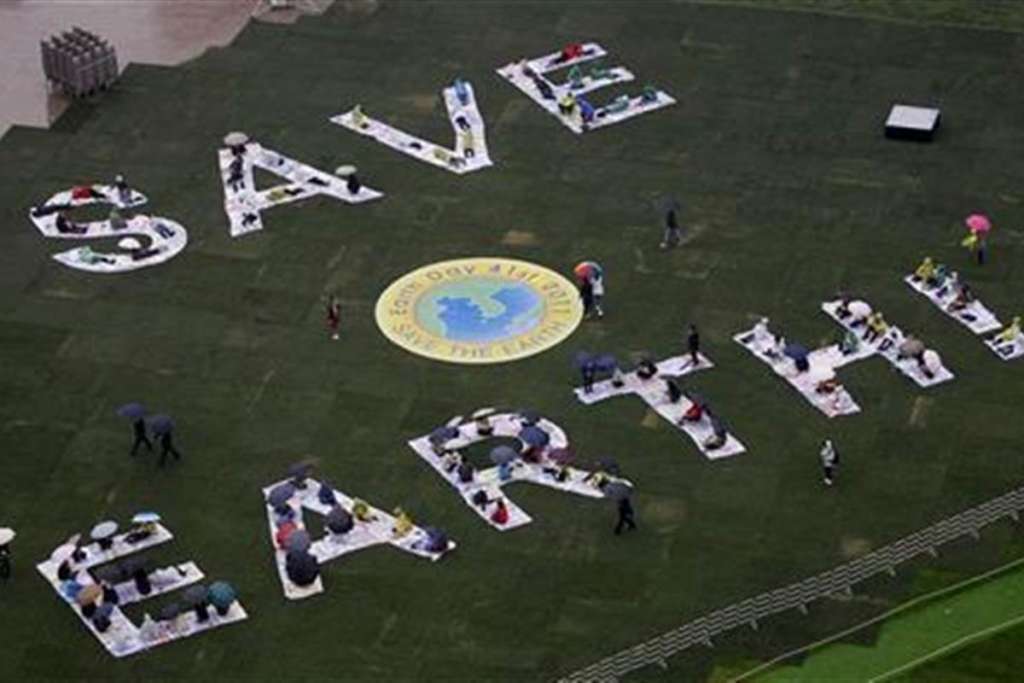The people who know the most about life on Earth tend to be the most impressed by its staying power.
Harvard professor Andrew Knoll marvels that our planet has sustained life continuously for four billion years — most of its 4.5 billion years in existence. This is not just a matter of location, said Knoll, who is an earth and planetary scientist. Mars and Venus are both in what astronomers would consider a “habitable” zone, getting sunlight in a range suitable for living organisms. Now both are barren (or close to it).
Earth has special features that may or may not be present on many of the other planets detected around the galaxy. Earth’s geology helps regulate the climate through the cycling of carbon dioxide. When exposed rocks weather, carbon dioxide gets pulled out of the atmosphere, allowing the globe to cool. When those rocks get covered in ice, the weathering stops, and carbon can build up as it’s replenished by volcanoes.
We can thank Earth’s system of plate tectonics for this, said Peter Ward, a paleontologist from the University of Washington and co-author of the book “Rare Earth: Why Complex Life Is Uncommon in the Universe.” As new crust continues to be exposed in some places and old crust is buried, carbon can cycle in and of the atmosphere. We’re also very lucky, said Ward, that the Earth got just the right amount of water. It’s thought that most came from impacts with comets early in the history of the solar system. If we’d gotten a bit more, and ended up like that third-rate Kevin Costner movie, he said, Earth would be a lot hotter — maybe too hot for complex life.
Complex life, including plants and animals, are particular. They didn’t get going until the most recent 600 million years. Bacteria are another story. It’s hard to put a date on the origin of simple life because it happened so early. What we know, said Harvard’s Knoll, is that the very oldest rocks on Earth were formed 3.8 billion years ago, and they hold preserved signatures of life.
That’s fast given the widely held view that a few million years after its formation, the infant Earth collided with another early planet, creating debris that became the moon. After the crash, some scientists have calculated that the Earth’s surface temperature reached 3,600 degrees Fahrenheit and our planet shone like a star.
After it cooled off, there were further radical changes: periods when tropical plants grew at the poles, and periods when ice flowed down to the equator. But the extremes always eventually gave way to more moderate periods, and life was never extinguished.
All this recovery and cycling may sound reassuring, backing a longstanding popular belief in an inherent balance of nature. As historian Spencer Weart describes it in his book “The Discovery of Global Warming”: “Hardly anyone could imagine that human actions, so puny among the vast natural powers, could offset the balance that governed the planet as a whole. This view of Nature — suprahuman, benevolent and inherently stable — lay deep in most human cultures.”
But in the last few decades, scientists have learned that there’s no real barrier between the physical processes of the planet and the biological ones. Earth was not born a blue planet rich with oxygen. Single-celled organisms called cyanobacteria started releasing oxygen into the atmosphere. The emergence of plants changed the climate. Animals changed the climate. Even the evolution of poop changed the physical world, said Ward, by creating a new mechanism by which carbon and other materials would get packaged up and sink to the bottom of the ocean.
That still leaves the argument that human-generated greenhouse gases — like early fish poop — represent nothing the Earth can’t handle. Knoll said he recalled a newspaper column by George Will, still available online, arguing that current climate change is nothing to worry about because the past periods of climate change were not the end of the world. But the column focused on recent, small blips in the climate, not on the bigger, longer-term upheavals.
Some periods of climate change were terrible. Take one 252 million years ago called the End Permian extinction. Large volcanic eruptions, possibly combined with ignition of coal beds, led to a rapid enough global warming to kill off about 90 percent of the planet’s species. This was good for some — especially sulfur-excreting bacteria — whose flourishing is preserved in the fossil record. But it was bad for plants and animals. In another of his popular books, “Under a Green Sky,” Ward describes the End Permian seashore this way: “No fish break its surface, no birds of any kind. We are under a pale green sky and it has the smell of death and poison.”
So life went on, in an altered form, and plants and animals again flourished after a few million years. Knoll doesn’t find this particularly reassuring. “We are changing the climate at a geologically unusual rate,” he said — changes comparable to an era of volcanism a million times more powerful than anything in human history. Earth’s climate will probably recover from this human-fueled round of global warming, but “on time scales that are unimaginable to humans.” And perhaps without humans.
(Bloomberg)
